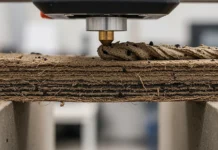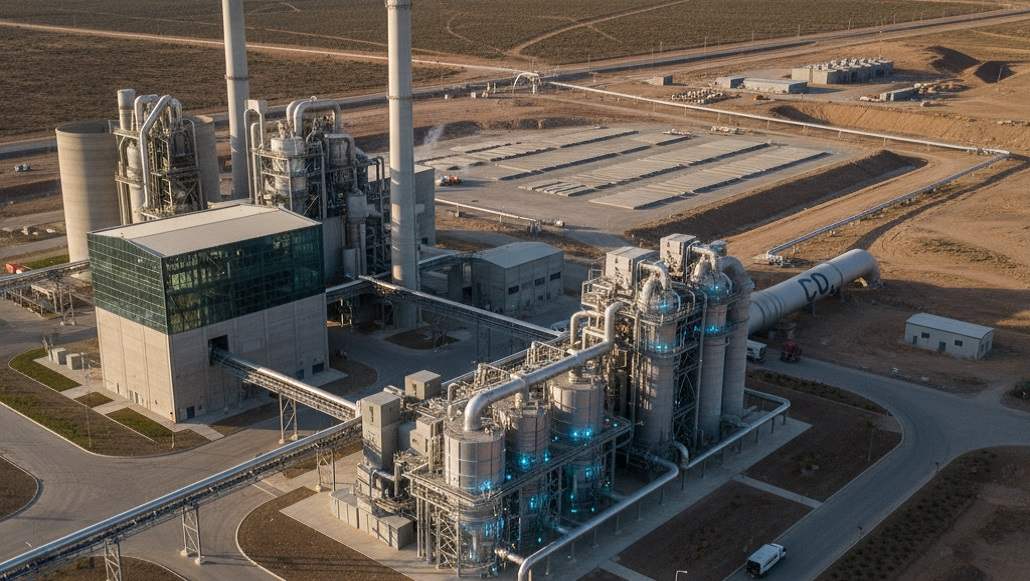Carbon Capture Concrete Paving the Way for Net Zero
The construction industry stands at a critical crossroads where environmental responsibility intersects with structural necessity. As global awareness of climate change intensifies, the demand for sustainable building materials has reached unprecedented levels. Among the most promising innovations emerging from this paradigm shift is carbon capture concrete, a revolutionary technology that transforms one of construction’s most carbon-intensive materials into a powerful tool for environmental restoration.
Traditional concrete production accounts for approximately 8% of global carbon dioxide emissions, making it one of the most significant contributors to industrial greenhouse gas output. The cement manufacturing process alone releases substantial amounts of CO₂ through both fuel combustion and the chemical breakdown of limestone. However, carbon capture concrete technologies are fundamentally altering this equation by not only reducing emissions but actively removing carbon dioxide from the atmosphere.
Understanding Carbon Capture Technology in Concrete Production
The fundamental principle behind carbon capture concrete lies in its ability to sequester carbon dioxide during the curing process. Unlike conventional concrete that releases CO₂ as it hardens, advanced formulations incorporate specially designed additives and minerals that capture and permanently store atmospheric carbon. This process occurs through various mechanisms, including direct carbonation where CO₂ reacts with calcium-rich compounds to form stable carbonate minerals.
Leading manufacturers have developed sophisticated systems that inject captured carbon dioxide directly into concrete mixers during production. The CO₂ bonds with calcium ions in the cement, creating calcium carbonate crystals that actually strengthen the concrete while permanently storing the carbon. This dual benefit addresses both environmental concerns and structural performance requirements, making it an attractive solution for construction professionals.
The technology extends beyond simple carbon storage to encompass entire production cycles. Modern carbon capture facilities at cement plants can capture up to 90% of process emissions, with the recovered CO₂ being either utilized in concrete production or stored through geological sequestration. This closed-loop approach represents a fundamental shift toward circular carbon economy principles in construction materials.
Low Carbon Concrete Innovations Driving Market Transformation
The development of low carbon concrete alternatives has accelerated dramatically as environmental regulations tighten and construction companies seek sustainable solutions. These innovations encompass a broad spectrum of approaches, from alternative cement formulations to revolutionary binding agents derived from industrial waste streams.
Supplementary cementitious materials have emerged as game-changers in reducing concrete’s carbon footprint. Fly ash from coal power plants, slag from steel production, and silica fume from silicon manufacturing can replace significant portions of traditional Portland cement while maintaining or even improving concrete performance. These materials not only reduce CO₂ emissions but also divert industrial waste from landfills, creating multiple environmental benefits.
Alkali-activated concrete represents another breakthrough in low carbon concrete technology. By utilizing industrial byproducts and alternative alkaline activators, these formulations can reduce carbon emissions by up to 80% compared to conventional concrete. The resulting material often exhibits superior durability and chemical resistance, making it particularly suitable for harsh environmental conditions.
Green Cement Revolution in Sustainable Building Materials
The transformation of cement production through green cement technologies is reshaping the foundation of sustainable construction. These innovations focus on both reducing the carbon intensity of cement manufacturing and developing entirely new binding systems that eliminate traditional limestone calcination processes.
Calcium-silicate-hydrate gel formation through alternative pathways has opened new possibilities for green cement production. Advanced chemical processes can create the binding compounds essential for concrete strength without the high-temperature limestone breakdown that generates massive CO₂ emissions. These processes often operate at significantly lower temperatures, further reducing energy consumption and emissions.
Bio-based cement technologies are emerging as particularly promising green cement alternatives. Researchers have developed bacterial and enzymatic processes that can produce cement-like binding materials through biological pathways. While still in early development stages, these technologies could eventually eliminate fossil fuel dependence in cement production entirely.
The integration of renewable energy sources into cement manufacturing has become increasingly common as companies pursue comprehensive sustainability strategies. Solar thermal systems, wind power, and biomass fuels are replacing traditional fossil fuel energy sources, significantly reducing the carbon intensity of cement production even when using conventional processes.
CO₂ Reduction Strategies and Implementation Challenges
Implementing effective CO₂ reduction strategies in concrete production requires coordinated efforts across multiple dimensions of the construction supply chain. From raw material sourcing to final building applications, each stage presents opportunities for carbon footprint reduction through technological innovation and process optimization.
Transportation logistics play a crucial role in overall carbon reduction strategies. Local sourcing of raw materials, optimization of delivery routes, and development of regional production networks can significantly reduce transportation-related emissions. Some companies have implemented sophisticated logistics algorithms that minimize carbon footprint while maintaining cost-effectiveness and delivery schedules.
Quality control systems must evolve to accommodate new carbon capture concrete formulations while ensuring structural integrity and regulatory compliance. Advanced testing protocols now include carbon content verification, long-term stability assessments, and performance validation under various environmental conditions. These comprehensive testing regimes provide confidence in both environmental benefits and structural performance.
Economic considerations remain central to widespread adoption of carbon capture concrete technologies. While initial costs may exceed traditional concrete, lifecycle analysis often reveals significant economic advantages through improved durability, reduced maintenance requirements, and potential carbon credit revenues. Government incentives and regulatory frameworks increasingly support these technologies through tax benefits and procurement preferences.
Future Prospects and Industry Transformation
The trajectory of carbon capture concrete development suggests a fundamental transformation of the construction materials industry over the coming decades. Emerging technologies promise even greater carbon reduction potential while maintaining the structural performance characteristics essential for modern construction applications.
Artificial intelligence and machine learning systems are being integrated into concrete production processes to optimize carbon capture efficiency and predict long-term performance characteristics. These systems can continuously adjust production parameters to maximize both environmental benefits and structural properties based on real-time monitoring data.
International collaboration and knowledge sharing accelerate the development and deployment of carbon capture concrete technologies. Research partnerships between universities, government agencies, and private companies are advancing the scientific understanding of carbon sequestration mechanisms while developing practical implementation strategies for diverse construction applications.
The convergence of carbon capture concrete with other sustainable construction technologies creates synergistic opportunities for comprehensive environmental impact reduction. Integration with renewable energy systems, smart building technologies, and circular economy principles positions these materials at the center of next-generation sustainable construction practices.
Conclusion
Carbon capture concrete represents more than just an incremental improvement in construction materials; it embodies a fundamental shift toward regenerative construction practices that actively contribute to environmental restoration. As the technology matures and scales globally, it offers the construction industry a pathway to not only achieve net zero emissions but to become a net positive force in addressing climate change.
The successful implementation of these technologies requires continued investment in research and development, supportive regulatory frameworks, and widespread industry adoption. However, the potential benefits extend far beyond environmental considerations to encompass improved structural performance, economic advantages, and enhanced resilience for future construction projects.
As we advance toward a net zero future, carbon capture concrete stands as a testament to human innovation’s capacity to transform environmental challenges into opportunities for positive change. The construction industry’s embrace of these technologies will play a crucial role in achieving global climate objectives while meeting the growing demand for sustainable built environments.































